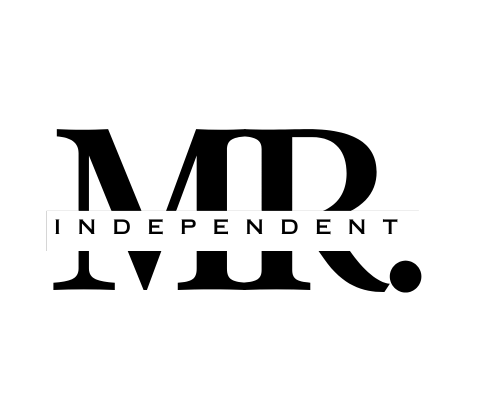So you want to leave your 9-to-5 and become your own boss? Hold that resignation letter.
Jumping ship without a backup plan is like skydiving without a parachute – dramatic, but probably won’t end well.
Starting a side business while keeping your day job doesn’t simply mean playing it safe – it’s actually the smarter way to build your empire. (And keep eating something besides ramen noodles.)
You can test that brilliant business idea, build a client base, and actually make some money before taking the full entrepreneurial plunge.
Whether you’re planning an online empire, freelance gigs, or a brick-and-mortar venture, the side hustle approach stacks the odds in your favor.
No need to choose between stability and ambition – you can have both. Pretty neat, right?
Key Takeaways
- A side hustle provides financial security through steady income while testing business viability without the pressure of immediate profitability.
- You can validate your business idea and gather customer feedback in a low-risk environment before committing full-time.
- The day job’s stable income allows strategic investments in your side business without accumulating debt or financial stress.
- Building a client base gradually while employed creates a smoother transition to full-time entrepreneurship with established recurring revenue.
- Side hustles develop essential business skills and industry connections while maintaining the safety net of regular employment.
What is a side-hustle and why is it important?
A side hustle represents supplementary work you pursue while maintaining your primary employment. It serves as your chance to build something that’s entirely yours, whether that’s freelancing, selling products online, or turning your weekend hobby into a money-making venture.
Consider it as your escape plan with training wheels – you’re not jumping ship, you’re testing the waters.
Your side hustle motivations might range from pure financial gain to pursuing a passion you’ve kept on the back burner. It’s creating a fallback option while exploring personal growth opportunities that your day job mightn’t offer.
You’re fundamentally becoming your own part-time boss, learning the ropes of entrepreneurship while your regular paycheck keeps the lights on. It’s like having a financial security blanket while you’re secretly plotting your independence.
Starting with a side hustle helps you overcome entrepreneurial fears while maintaining stability in your career transition.
Why You Should Start a Side Hustle Before Leaving Your Day Job
Dreaming about quitting your job to pursue your passion is one thing, but jumping ship without a safety net is like trying to swim across the ocean without learning to float first.
Making the shift from employee to entrepreneur becomes considerably smoother when you’ve already got momentum from a thriving side business, steady income, and valuable experience under your belt.
Entrepreneurial readiness signs often become clearer while maintaining stable employment as you test your business concept.
Now, we’ll look into the compelling reasons why starting your side business while keeping your day job is a must for long-term success.
To build a financial safety net before quitting your job.
When you’re dreaming of entrepreneurial freedom, having a stack of backup cash can mean the difference between thriving and barely surviving during those nerve-wracking early months of running your business full-time.
Picture this: you’re steadily growing your side business while your regular paycheck keeps flowing, creating a comfortable cushion that catches you if things get wobbly. This approach doesn’t necessarily mean playing it too safe – it’s focused on being strategic and giving yourself permission to take bigger risks later because you’ve got solid ground beneath your feet.
Your regular income becomes your launching pad, not your prison.
The beauty of building this financial buffer is that it reduces the pressure to make your side hustle immediately profitable. You can experiment, pivot, and fine-tune your business model without the paralyzing fear of not making rent next month.
It’s like having training wheels while you’re learning to balance – they come off eventually, but they sure make the learning process less scary.
Unlike traditional employment benefits, self-employment requires you to handle everything from healthcare to retirement planning on your own, making that financial lifeline even more crucial.
- Calculate your bare-minimum monthly expenses and multiply by 6-12 months to determine your ideal financial cushion size – this number becomes your financial north star while building your side income.
- Start redirecting a fixed percentage of your day job income into a separate business account, treating it like a non-negotiable expense just like your rent or utilities.
- Track every penny your side hustle makes and resist the urge to spend it – reinvest most of it back into the business while your regular job covers your living expenses.
- Create specific financial milestones that signal when you’re ready to shift gears (example: side hustle consistently earning 75% of your current salary for 3 consecutive months)
To test your business idea without the pressure of survival.
While your day job provides steady income and financial security, starting a side hustle creates the perfect laboratory to experiment with your business concept. You’ll get real-world business validation and valuable feedback without the panic of wondering how you’ll pay next month’s rent.
Regard it as risk management with training wheels while maintaining your stable career. You can test, fail, adjust, and grow your entrepreneurial skills while your regular paycheck keeps you comfortably afloat.
| Testing Area | Low Pressure | High Pressure |
|---|---|---|
| Product Fit | Iterate freely | Rushed decisions |
| Pricing | Test markets | Desperate pricing |
| Marketing | Learn slowly | Must succeed now |
| Operations | Build systems | Chaotic setup |
Look, you wouldn’t jump out of a plane without practicing in a wind tunnel first, even with the best equipment available.
Your side hustle is that wind tunnel – a safe space to figure out if your business idea actually has wings before you take the big leap into full-time entrepreneurship.
To gain experience while minimizing financial risk.
Starting your side business while keeping your day job means having a backup plan while learning to walk the tightrope. You get to experiment, make mistakes, and figure out if your business idea actually works – all while your regular paycheck keeps coming in.
It’s basically a real-world business education without the crushing pressure of needing immediate profits to survive.
The beauty of this approach lies in its low-stakes learning environment. When you’re not desperate for your side hustle to pay next month’s rent, you can focus on building something sustainable rather than grabbing at quick cash.
You’ll discover whether customers actually want what you’re selling, how much time your business really requires, and what skills you need to develop – all while maintaining your financial stability.
This strategy also gives you invaluable market feedback without risking everything. Maybe you’ll realize your initial business idea needs major adjustments, or perhaps you’ll uncover an even better opportunity along the way.
Either way, you’re gaining practical experience and industry insights while your regular income covers your bills and keeps your stress levels manageable.
- Testing business concepts with real customers provides concrete data about market demand, pricing strategies, and operational challenges – insights you can’t get from just planning or theorizing.
- Working both a job and side hustle develops essential time management and prioritization skills that become pivotal when running a business full-time.
- Financial pressure often leads to poor business decisions, but maintaining your regular income while building your business allows for more strategic, long-term thinking.
- The experience gained through running a side hustle part-time reveals whether you truly enjoy entrepreneurship enough to make it your full-time career.
To develop a network that can support your side hustle growth.
A strong professional network becomes one of your greatest assets when growing a side business. Your current job offers the perfect foundation for cultivating these connections, as you interact daily with potential future allies and mentors .
While you’re still employed, you’ve got the perfect opportunity to implement smart networking strategies without the pressure of immediate results. This position of stability allows you to focus on building genuine, long-term relationships rather than rushing into transactional connections.
| Networking Strategy | How It Helps Your Side Hustle |
|---|---|
| Connect with colleagues | They might become your first clients or referral sources |
| Attend industry events | Build relationships outside your immediate circle |
| Join professional groups | Access mentors and potential business partners |
Don’t underestimate the value of your existing industry connections – they’re pure gold for your future venture.
Your day job isn’t simply paying the bills; it’s your ticket to building relationships that’ll fuel your side hustle’s growth while providing valuable insights into your target market and industry trends.
To validate your side hustle’s potential before fully committing.
Starting your side hustle while still employed gives you a perfect testing ground to validate whether your brilliant idea actually has legs. You get to experiment, fail, adjust, and grow without the paralyzing pressure of needing immediate success to survive.
Running your side venture parallel to your regular job creates this beautiful sweet spot where you can gather real market feedback and build a customer base without betting your entire financial stability on it. It’s basically creating your own business laboratory where the stakes are lower, but the learning opportunities are massive.
You’ll quickly discover if people actually want what you’re selling and if they’re willing to pay what you need to charge.
The validation process while maintaining your day job isn’t solely about testing your business idea – it’s also about testing yourself too. You’ll learn whether you genuinely enjoy the work, can handle the workload, and have the dedication to push through challenges.
Plus, you’re building evidence of success (or learning from failure) with actual customers, rather than just theoretical projections in a spreadsheet. This real-world proof becomes invaluable when deciding if and when to make the full-time leap.
- Your current job becomes your business’s silent investor, funding your experiments and protecting you from desperate decisions that could compromise your venture’s long-term success
- Working with actual customers while still employed helps you refine your offering, pricing, and business model without the pressure of needing to make rent next month
- The skills gap between employee and entrepreneur becomes clearly visible, allowing you to develop essential capabilities before they become mission-critical
- You can build a financial runway by saving your day job income while your side hustle grows, creating a smoother changeover when you’re ready to go all-in
To learn how to manage your time effectively for both roles.
Running a side hustle alongside your day job demands exceptional organization and careful attention to detail. Mastering time management becomes your critical survival skill, especially when juggling multiple responsibilities.
You’ll need to become a ninja at prioritization strategies, learning to identify high-impact tasks from time-wasters. Ruthlessly guarding your hours like they’re made of gold becomes essential for maintaining productivity and work-life balance.
| Time Management Tips | Implementation Strategies |
|---|---|
| Morning Routine | Wake up 2 hours earlier for focused work |
| Lunch Breaks | Use for emails and quick tasks |
| Evening Schedule | Block 2-3 hours for side hustle |
| Weekend Planning | Map out next week’s priorities |
| Digital Tools | Use automation and productivity apps |
You can’t create more hours in the day, but you can maximize the efficiency of every minute through strategic planning. You can squeeze more juice from the ones you’ve got by eliminating distractions and focusing on high-priority activities.
Start tracking where your time goes using detailed time-logging methods and productivity apps. You’ll be shocked at how much Netflix time and social media scrolling you can convert into productive hustle time, leading to significant progress in your business goals.
To increase your skillset and boost your resume with side projects.
Building your skills through side projects while keeping your day job means not only do you maintain financial stability, but you’re also crafting an impressive portfolio that shows potential clients or employers what you’re truly capable of. It’s the difference between saying “I can do this” and proving “I’ve already done this.”
When you engage in side projects, you’re fundamentally running your own mini-business laboratory. Each project becomes an opportunity to learn new tools, master different techniques, and understand various aspects of business operations – from client communication to project management. These experiences become powerful resume boosters that set you apart from others who only have traditional work experience.
The beauty of developing side projects while employed is that you can take calculated risks without the pressure of immediate success. You’re free to experiment, fail, learn, and improve – all while your regular paycheck keeps flowing. This combination of stability and growth creates an ideal environment for skill development that might be too stressful to attempt if you were solely dependent on your side hustle income.
- Your side projects demonstrate initiative and entrepreneurial spirit to employers, showing you’re not afraid to push beyond your comfort zone and take ownership of your professional development
- Each completed project adds a concrete example of your capabilities, making your resume more dynamic and memorable than those listing only job responsibilities
- Side projects often require cross-functional skills – from marketing to basic accounting – giving you valuable exposure to different business aspects that make you more versatile
- The skills you develop through side projects can lead to unexpected opportunities, as you might discover new passions or niches that weren’t visible from within your day job
To leverage your current job to learn and improve your hustle.
While working your day job, you’re sitting on a goldmine of opportunities to enhance your side hustle. Your current position provides daily access to professional insights and business practices that can directly benefit your entrepreneurial goals.
Every meeting, project, and challenge can fuel your professional growth and teach you valuable job skills that will prove essential for your future venture.
| Current Job Elements | Skills to Learn | Side Hustle Application |
|---|---|---|
| Team Meetings | Communication | Client Presentations |
| Project Management | Organization | Business Planning |
| Office Politics | Negotiation | Customer Relations |
| Budget Handling | Financial Planning | Pricing Strategy |
Think about it – you’re getting paid to learn while building valuable industry connections and understanding market dynamics.
While Bob from accounting drones on about quarterly reports, you’re secretly studying presentation techniques and developing your own financial acumen.
When Sarah’s micromanaging your projects, you’re actually mastering timeline management and developing systematic approaches to workflow optimization. It’s like being a business spy, but totally legal and ethical, while gaining insider knowledge of industry best practices.
To enjoy the flexibility to adjust your side hustle as needed.
Starting a side hustle while keeping your day job gives you incredible wiggle room to experiment and adapt. You can test different approaches, pivot when needed, and fine-tune your business model without the crushing pressure of depending on that income to survive. Your steady paycheck becomes your permission slip to be creative and strategic rather than desperate and rushed.
The flexibility to adjust means you’re not locked into any single path or strategy . Maybe you start selling handmade jewelry but discover your customers are more interested in your jewelry-making workshops. Or perhaps your freelance writing gig reveals that your true passion lies in editing other writers’ work. When you’re not relying on your side hustle for survival, you can follow these natural evolutions without panic.
This breathing room also extends to your timing and workload management. You might scale back during busy periods at your day job or ramp up during slower seasons. If you need to take a break to prevent burnout or handle personal matters, you can do so without jeopardizing your financial stability.
- Your success metrics can evolve naturally – rather than forcing yourself to hit specific income targets immediately, you can focus on learning, building relationships, and developing your skills.
- Mistakes become valuable learning opportunities instead of catastrophic setbacks – when your rent doesn’t depend on your side hustle, you can view challenges as growth moments rather than failures.
- You can invest in your business strategically – using your regular income to fund improvements and upgrades gradually, rather than taking on debt or depleting savings.
- Time management becomes more flexible – you’re able to adjust your side hustle hours based on energy levels, day job demands, and personal commitments without sacrificing essential income.
To protect your mental health by maintaining job security.
The security of a steady paycheck offers financial stability, but it’s also a cornerstone of mental well-being when launching a side business. Having a reliable income stream helps maintain emotional equilibrium and reduces stress during entrepreneurial ventures.
When you keep your day job while building your side hustle, you’ll develop greater mental resilience without the crushing pressure of immediate success. The consistent income from your primary employment creates a psychological buffer that allows for more strategic business development and measured growth.
| With Job Security | Without Job Security |
|---|---|
| Reduced anxiety | Constant stress |
| Higher job satisfaction | Decision paralysis |
| Strategic planning | Reactive choices |
The stability of regular employment provides both financial and emotional support, allowing you to navigate the challenging waters of entrepreneurship with greater confidence and clarity.
To gain customer insights and feedback before full-time launch..
Running your side hustle alongside your day job creates the perfect laboratory for customer research. You can observe how people interact with your product or service, collect honest opinions, and identify pain points before investing all your resources.
The feedback you gather becomes your compass, guiding improvements and revealing whether your business idea truly resonates with your target market.
When you’re still earning a steady paycheck, you can afford to be more receptive to constructive criticism and make necessary pivots. Instead of defensively clinging to your original vision because rent is due, you have the emotional and financial bandwidth to process feedback objectively and implement changes that could mean the difference between success and failure.
- Engage with early customers through surveys, interviews, and social media to understand their needs, preferences, and purchasing behaviors – their input shapes your offering before you go all-in.
- Test different pricing strategies, marketing messages, and product features while you have financial stability, allowing you to find the sweet spot that maximizes both customer satisfaction and profitability.
- Document all feedback systematically, including complaints and suggestions, creating a valuable database of insights that will inform your full-time launch strategy.
- Build a core group of loyal customers who can provide testimonials, referrals, and recurring revenue when you shift to full-time entrepreneurship – their support becomes your foundation for growth.
To establish multiple income streams for financial stability.
While relying on a single income source can leave you vulnerable to financial shocks, especially during economic downturns or industry disruptions. Developing multiple revenue streams through a side hustle creates a robust buffer and provides opportunities for exponential growth.
You’ll find that income diversification is a hard requirement for achieving true financial security in today’s unpredictable economy. The key is to strategically select complementary income streams that balance risk and reward while leveraging your existing skills and resources.
| Income Stream | Risk Level | Potential Monthly Revenue |
|---|---|---|
| Day Job | Low | $3,000 – $5,000 |
| Online Store | Medium | $500 – $2,000 |
| Freelancing | Medium-High | $1,000 – $3,000 |
| Digital Products | Low-Medium | $200 – $1,500 |
Think of your side hustle as your financial backup generator – when one source flickers, the others keep your lights on and maintain your lifestyle stability. Plus, you’ll sleep better knowing you’re not putting all your eggs in your employer’s basket and have built sustainable alternatives for long-term wealth creation.
To be honest – your 9-to-5 might feel secure, but having multiple income streams is like wearing a financial bulletproof vest in an increasingly volatile job market.
This diversification strategy not only protects your current financial status but also creates opportunities for passive income and future wealth accumulation.
To build a strong client base while keeping a steady income.
Building a solid client base while keeping your day job means you’re fundamentally creating a sustainable foundation for your future business ventures without immediately sacrificing your financial stability. This approach allows you to gradually shift from employee to entrepreneur while maintaining peace of mind through a steady paycheck.
The beauty of this strategy lies in its risk-minimizing nature. Instead of diving headfirst into self-employment with no guaranteed income, you’re methodically building relationships, testing your services, and refining your offerings during your off-hours.
Your existing job provides the financial cushion needed to be selective about clients and projects, ensuring you build quality connections rather than accepting every opportunity out of desperation.
This dual-track approach might feel overwhelming at times, but it’s incredibly powerful for long-term success. By maintaining your primary income source while developing your side business, you can reinvest earnings into your growing venture instead of immediately needing them for living expenses.
Plus, you’ll have time to address inevitable startup challenges without the added pressure of requiring immediate profitability.
- Dedicate specific time blocks for client acquisition and management, treating these hours with the same importance as your day job meetings – perhaps early mornings, lunch breaks, or weekend slots
- Focus on acquiring 3-5 solid, recurring clients before considering leaving your full-time position, as this creates a more predictable income stream for your shift
- Leverage your current professional network thoughtfully, being mindful of potential conflicts of interest while still building meaningful connections for your side business
- Document your processes, client feedback, and learning experiences from the start – this information becomes invaluable when you’re ready to scale your business full-time and need to replicate successful strategies
Conclusion
Keeping your day job while starting a side hustle is being strategic. You get to experiment, fail, and learn without wondering how you’ll make rent next month.
Think of it as entrepreneurship with a safety net. You can test your brilliant (or terrible) ideas while someone else still pays your bills. Plus, you’ll actually have money to invest in your business instead of eating ramen for dinner.
Your lunch breaks and weekends become your startup incubator. Build that empire one small step at a time. When your side gig finally makes enough cash to support you, then you can dramatically quit your job – powerpoint presentation optional.
FAQs
How much should my side hustle make before I quit my job?
Your side hustle should ideally replace at least 70-80% of your day job income before you quit. This ensures financial stability during the transition.
Is starting a side hustle really worth it?
Absolutely! A side hustle can provide financial security, skill development, and a smoother transition if you decide to quit your job and go all-in on your passion.
How much money should I have saved before quitting my job?
Aim to have 6-12 months of living expenses saved. This cushion reduces stress and lets you focus fully if you decide to go all-in on your side hustle.
At what point should I leave my 9-5 if my side hustle is bringing in more money per week?
When your side hustle consistently makes more than your 9-5 and you have enough savings, it’s a good indicator to quit your job and go all-in.
What are the risks of quitting my day job for a side hustle?
Risks include inconsistent income, loss of benefits, and financial strain. Starting a side hustle before leaving your day job helps minimize these risks.
Should I go all-in on my side hustle or keep my day job?
It depends on your financial security, side hustle stability, and risk tolerance. Testing the waters first is usually the safer route.
How do I balance a side hustle and a full-time job?
Prioritize tasks, set clear boundaries, and utilize productivity tools. Efficient time management is key to maintaining work-life balance.
What are the benefits of starting a side hustle before quitting my job?
You minimize financial risk, gain valuable experience, and validate your business idea—all before making the leap to go all-in.
How do I know when my side hustle is ready for full-time commitment?
When it consistently covers your expenses, shows growth potential, and you’re ready to go all-in, it’s time to consider the switch.
What’s the smartest way to go all-in on your side hustle?
Start small, validate your idea, build savings, and transition gradually. This reduces financial risk and increases your chances of success.









